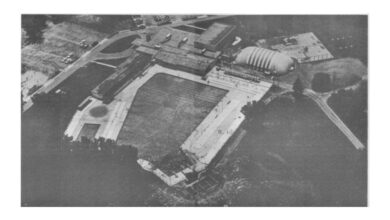WHY I LEFT SOLO PRACTICE.

In the “Back to Indiana: Deciding to Practice in Indiana” blog, I mentioned I left solo practice after 23 years to join a large multi-specialty internal medicine group. I was 63 years old, had retirement in my sights, and wanted to stop running a business. But why?
Running a private physician practice is a business of incredible complexity. Medicare and private insurance companies are heavily involved and exert a lot of influence on the daily inner workings . They directly contribute to making practice difficult. The easy part of solo practice is the care of patients. Diseases are the same, examining a patient is the same, and I was the same. The hard part was dealing with the constant changes mandated by Medicare and private insurance, and the constant reduction in the amount they payed me for services rendered. In other words, diagnosing and treating patients did not change, but getting paid for it did.
When I was in solo practice, I was responsible for everything. I hired employees, fired employees, did payroll, paid the bills, bought supplies and vaccines, and made the final decisions on coding and billing. Doing these jobs took a lot of my time, but my employees eased the burden by assuming some of the tasks. This aspect of practice (the business of medicine) is not taught in med school. It’s something you learn on your own. If you spend the time to learn it well, getting paid (the hard part) goes more smoothly.
I had to learn coding and billing from scratch. Accurate coding is absolutely essential to being paid the amount you’re allowed. Make no mistake, doctors are not paid one cent more than Medicare or their private insurance allows. Diagnoses have one huge set of codes (ICD-10) and procedures (what the doctor does) have an entirely separate set of codes (CPT). Both codes are submitted in a claim for services rendered. It took a lot of time to learn coding. Sandy did the billing so she learned it, too. If she was uncertain about a code, I was the final arbiter.
At the beginning of each year, a new set of codes and changes to old codes, were published. Each year we had to purchase a new procedure coding manual, and the changes were never obvious so we had to find them only by trial and error, ie. Submit a claim, have it denied, and then spend an hour on the phone with a rude, indifferent insurance rep to find your mistake; I’m not making this up.
Each year, coding and billing got more difficult, payment was denied more often, and the amount we were paid decreased. Contacting payors was always difficult, but it got worse—long hold times, reps that were not helpful, and incorrect information—all this frustration just so I could be paid less than I was paid last year. I needed a “billing department,” not just one person.
It was also my responsibility to decide on vendors—which lab do I use for blood work, where do I get the best price for vaccines, which medical supplier has the best deal, who do I use for payroll, who do I use for employee retirement funds, am I paying too much for rent and utilities, and it’s time to renegotiate my lease, just for starters. For 16 years I owned an office condo so as the owner I was responsible for everything.
Insurance companies and Medicare conjured up all sorts of policies that made life miserable. Prior authorizations, pre-certifications, and advance beneficiary notifications were terms that kept me awake at night. The intent was to save the insurance company money and to prevent me from ordering an expensive procedure they didn’t think was justified. Prior authorizations were required if I ordered a special diagnostic procedure. Pre-certifications were done when I referred a patient to a specialist. For both, my staff, or I, had to respond to a series of questions to authorize the test or certify the referral. I had to get approval before the test could be done or the specialist seen. Approval was sometimes denied. If it was, I could appeal the decision, but that required a phone call to a company consultant and another interrogation.
Advanced beneficiary notification, ABN’s, are Medicare’s way of telling you not to expect payment. ABN’s were intended for patients, but physicians were victims of this, too.
For years, if a doctor ordered a test, it was done; no questions asked. As medical costs rose, and utilization of services increased, payers put the onus on doctors by making them justify ordering special tests. Most doctors saw this as an insult to their judgement and knowledge and resented it. Why spend 11 years in medical training if a non-professional is going to make the decision? I certainly felt that way. These calls were very disruptive and took a lot of our time. Having my judgement questioned upset me every time.
But the biggest reason for leaving solo practice was that the amount Medicare and insurance companies paid me was not enough to cover overhead and pay me a salary. Reimbursements declined every year. As a cost-saving measure, Congress would announce a 5% or 7% reduction in payments. Doctors screamed bloody murder so Congress would announce a 1-2% increase. However, the 1% increase was added on after the 5-7% decrease; a net loss. How stupid do they think we are? It gradually became harder to pay myself. Employees needed a raise, rent goes up, supplies cost more, vaccine prices were becoming outrageous, all while my revenues declined.
I couldn’t see any more patients than I was seeing and overhead expenses were as low as I could get them, but the business was suffering. I was treading water. My profit margin evaporated. I had to make a change.
Solo practice today is nearly impossible. The revenues received from patient care are inadequate for all the things required to run a practice. The items I mentioned previously are just the beginning. The expenses of electronic medical records, coding and billing systems, IT support, malpractice insurance premiums, health insurance premiums, employees salaries, legal and accounting fees, payroll expenses, and 401K contributions added to the financial strain, because revenues weren’t enough to cover it all. When I realized the situation was critical, I made the decision to join a group practice.
Associating with Indiana Primary Care Associates (IPCA) relieved me of the responsibilities of running a business. The only thing I had to worry about then was seeing patients and taking good care of them. A huge burden was lifted. I also had a guaranteed salary. I worked 3 days a week and got ample vacation time. I used the next 7 years at IPCA to transition into retirement.
The 23 years in solo practice were the most rewarding of my 40-year career. Practicing alone was never a problem for me. If I needed something, I got it. If I had an expense, I paid it. I was the decision-maker so if I wanted it, I was responsible for obtaining it and paying for it. In the early days, money was easier and practicing was actually fun. After Y2K that all seemed to change and money was tighter. Giving up solo practice was difficult, but financially it made sense and my stress level dropped. I have no regrets about the decision because it was the wise thing to do.




